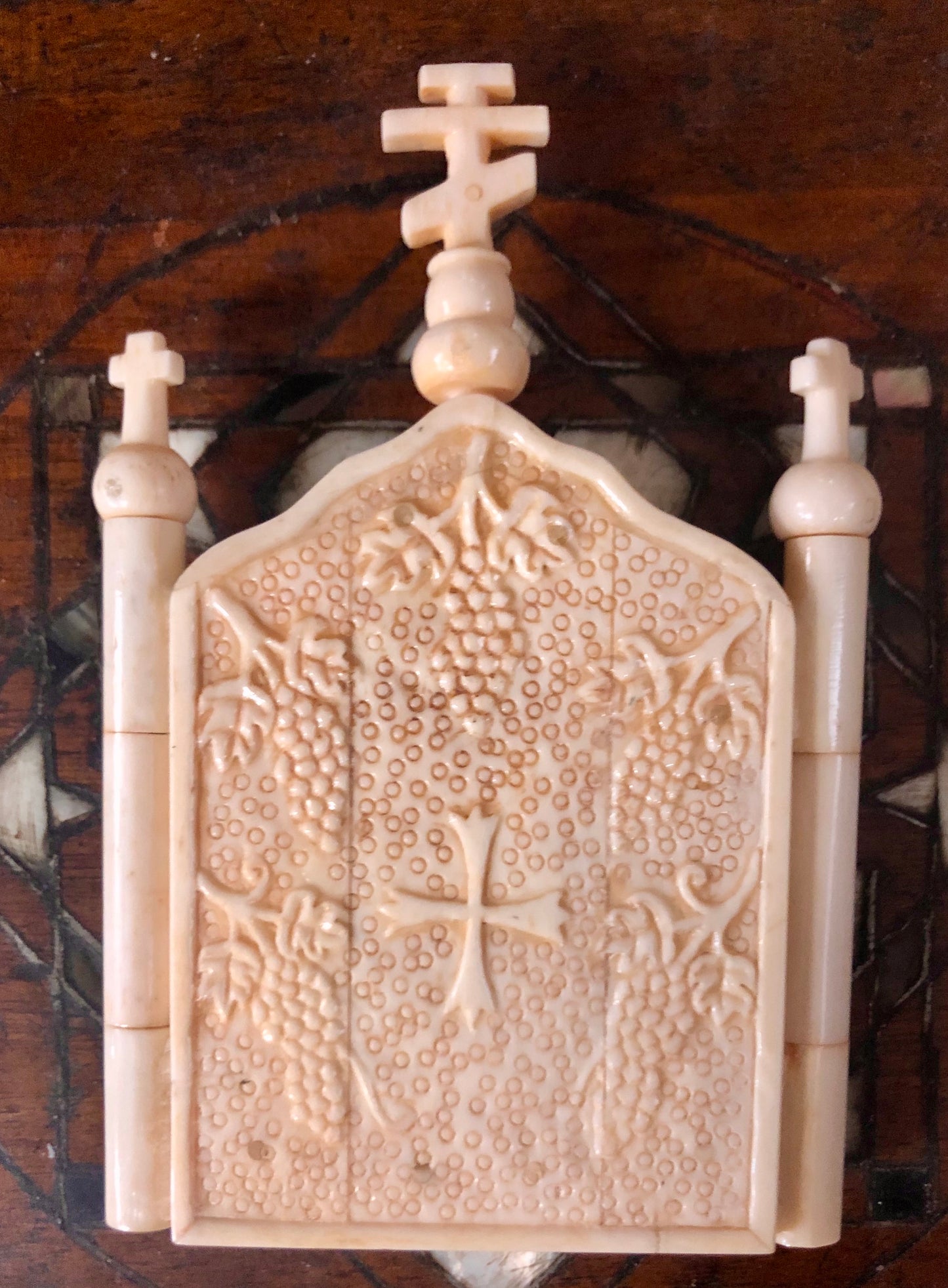hamedian gallery
St. Nicholas, handmade icon painted and sculptured on Ivory. Late 19th Century.
St. Nicholas, handmade icon painted and sculptured on Ivory. Late 19th Century.
Share
Couldn't load pickup availability
St. Nicholas along with the Archangels Gabriel and Michael. Late 19th C. (1870-1880)
The icon is in excellent condition.
Size: 12x8 closed, 12x15 opened cm. 4.7x3 closed, 4.7x6 opened.

Very little is known about the historical Saint Nicholas. The earliest accounts of his life were written centuries after his death and contain many legendary elaborations. He is said to have been born in the Greek seaport of Patara, Lycia in Asia Minor to wealthy Christian parents.[9] In one of the earliest attested and most famous incidents from his life, he is said to have rescued three girls from being forced into prostitution by dropping a sack of gold coins through the window of their house each night for three nights so their father could pay a dowry for each of them. Other early stories tell of him calming a storm at sea, saving three innocent soldiers from wrongful execution, and chopping down a tree possessed by a demon. In his youth, he is said to have made a pilgrimage to Egypt and the Palestine area. Shortly after his return, he became Bishop of Myra. He was later cast into prison during the persecution of Diocletian but was released after the accession of Constantine. An early list makes him an attendee at the First Council of Nicaea in 325, but he is never mentioned in any writings by people who were actually at the council. Late, unsubstantiated legends claim that he was temporarily defrocked and imprisoned during the Council for slapping the heretic, Arius. Another famous late legend tells how he resurrected three children, who had been murdered and pickled in brine by a butcher planning to sell them as pork during a famine.
Fewer than 200 years after Nicholas's death, the St. Nicholas Church was built in Myra under the orders of Theodosius II over the site of the church, where he had served as a bishop and Nicholas's remains were moved to a sarcophagus in that church. In 1087, while the Greek Christian inhabitants of the region were subjugated by the newly arrived Muslim Seljuk Turks, and soon after their church was declared to be in schism by the Catholic church, a group of merchants from the Italian city of Bari removed the major bones of Nicholas's skeleton from his sarcophagus in the church without authorization and brought them to their hometown, where they are now enshrined in the Basilica di San Nicola. The remaining bone fragments from the sarcophagus were later removed by Venetian sailors and taken to Venice during the First Crusade. His relics in Bari are said to exude a miraculous watery substance known as "manna" or "myrrh", which some members of the faithful regard as possessing supernatural powers.






Why us?
"At Hamedian Gallery, our journey spans over 35 years of dedication to excellence in the world of antiquities. Through hard work, passion, and the support of our valued customers, we've achieved remarkable milestones that have shaped our reputation as a trusted source for rare and authentic treasures.
Our breakthroughs in the industry have been fueled by the countless friendships and partnerships we've cultivated along the way. These relationships have not only enriched our collection but have also allowed us to expand our offerings to include a diverse array of items, from Icons and pottery to ancient coins, statues, and carpets.
One of our proudest achievements came when the Israeli Antiquities Authority and The Ministry of Tourism granted us authorization to sell a wide range of antiquities, affirming our commitment to authenticity and integrity. This milestone opened doors to new opportunities, leading to partnerships with international companies and participation in prestigious auctions worldwide.
What sets us apart is our unwavering dedication to authenticity. Every item in our gallery is accompanied by a legal certificate from the Israeli Antiquities Authority, and our inventory is meticulously cataloged and classified by the Israeli Museum. This ensures that our customers can shop with confidence, knowing they are acquiring genuine pieces of history.
To our esteemed customers, we extend our heartfelt appreciation for your trust and support. Thank you for allowing us to share our passion for antiquities with you. We invite you to explore our gallery and discover the timeless treasures that await."






